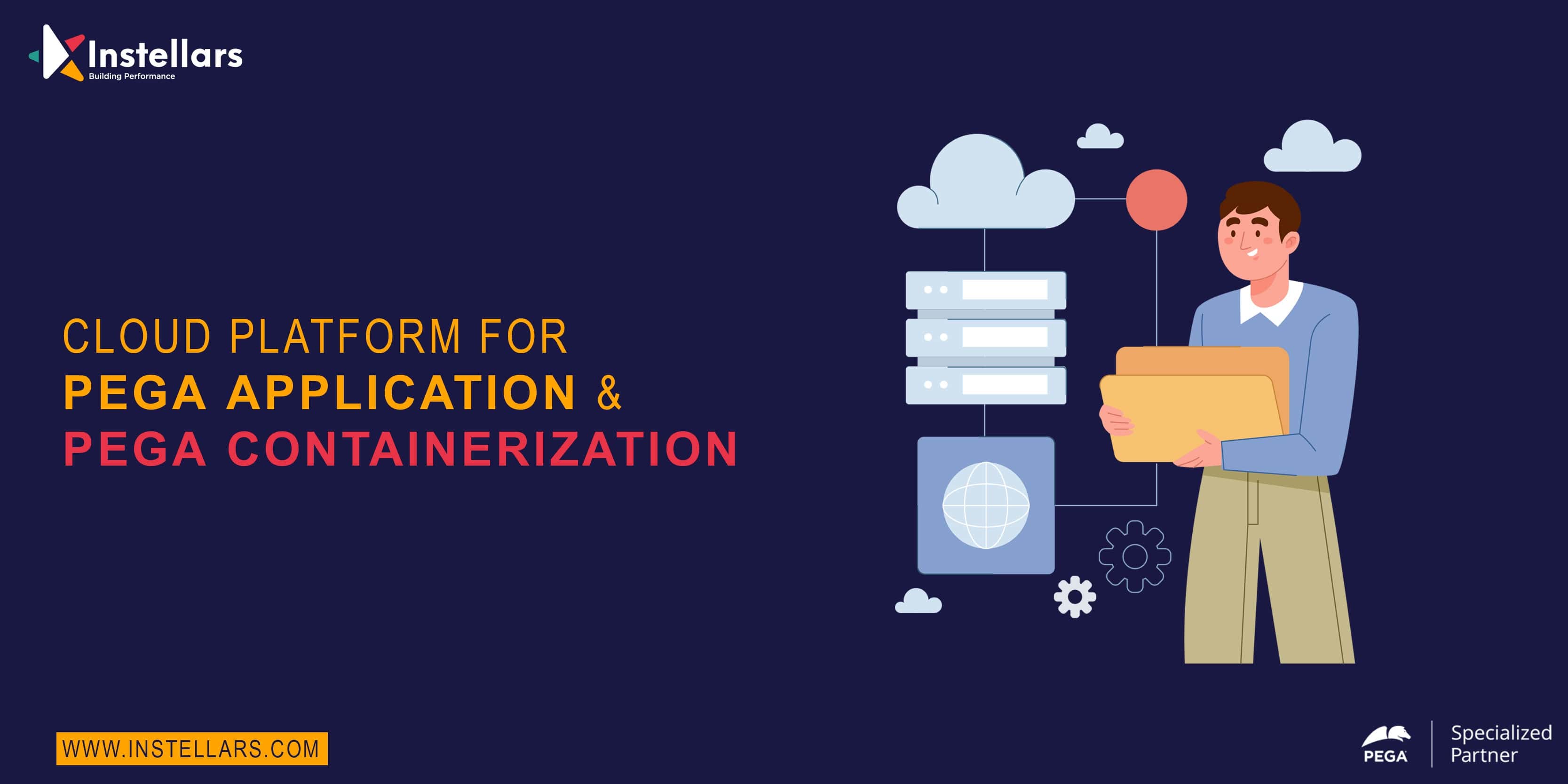
Cloud Platform for Pega Application and Pega Containerization

Cloud Platform for Pega Application and Pega Containerization
Pega, the leading low-code application development platform can deploy on-premises or in the cloud. Deploying the Pega application in the cloud helps to improve business operations and customer engagement and provides us with numerous benefits.
Benefits of deploying Pega in the cloud
· Scalability – Pega applications can be easily scaled up or down based on business requirements. The additional resources can be provisioned based on an increase in resource utilization and can reduce the resources when the usage
· High Availability – Pega applications are always available and can be recovered quickly from any issues. It helps to minimize application downtime and ensure business continuity.
· Cost Saving – Deploying applications in the cloud can reduce hardware and maintenance costs and the need for an IT support engineer to manage the infrastructure. The clients can pay, based on resource utilization
· Security – Provides features such as encryption, whitelisting, data encryption (in transit and at rest), and antivirus/malware configuration.
· Automatic updates - Automatic updates to infrastructure and the software to ensure that the latest version of the software is being configured.
Pega provides two deployment options.
- Pega Cloud
- Client-managed cloud
Pega Cloud
Pega cloud subscription provides a Pega-managed cloud service that offers a platform for building, deploying and managing applications without the need to manage infrastructure. Pega cloud services provide the environment, tools and services to start the platform up and running faster.
Pega cloud service ensures a secure, scalable and reliable and compliant infrastructure environment for running Pega applications. It offers many services such as application monitoring, security patching, disaster recovery and data backup. The application team can focus on the value of the use case delivery and not on the infrastructure and operations. The environment is always updated to the latest version of underlying software with 24/7 global client support.
Below is the list of tasks or activities for an application deployed in the Pega cloud.
Client-managed cloud
With a client-managed cloud, clients will have more control over their Pega application and can manage their cloud infrastructure and operations. The clients are responsible for designing, securing, networking, and monitoring Pega environments. The client can choose the cloud providers and have the flexibility to do customization and configurations. It is more suitable for clients with specific security and compliance requirements, where the application should be hosted in a way as per the business needs. The clients can deploy and manage the Pega Platform using their cloud team.
· Amazon Web Services
· Microsoft Azure
· Google Cloud Platform
· VMware Tanzu (Platform-as-a-Service)
· RedHat OpenShift (Platform-as-a-Service)
Each cloud provider has its set of features, benefits and pricing models. The clients can choose the appropriate provider by evaluating the features and benefits aligned with their business needs. The Pega application software platform can be containerized to run in an environment.
Containerization
Containerization is a software deployment process that bundles an application’s code with all the files and libraries it needs to run on any infrastructure. Containerization enables developers to create applications that can run consistently across different platforms and environments, from development to production.
Pega containerization is the process of packaging Pega application into containers. It allows for easy deployment, auto-scaling, flexibility, and portability of the application. Pega Provides docker images that enable clients to deploy Pega software in a containerized environment. The application can run in a containerized environment such as Kubernetes.
Kubernetes is an open-source platform that automates the deployment, scaling and management of containerized applications. Pega recommends using modern cloud architecture with Kubernetes and Helm and selecting its infrastructure model.
Benefits of Containerization
Scalability - Autoscaling starts up new containers as needed for heavy loads or spikes, whether due to CPU usage or memory thresholds.
Portability – When an application is packaged in containers, it can easily be deployed to different environments.
Maintenance - As containers are lightweight, it’s easy to maintain the application and its dependencies.
Efficiency - Software running in containerized environments shares the machine’s OS kernel, resources and application layers within a container and can be shared across containers
Reduced Cost – Using containers over virtual machines helps in reducing infrastructure costs.
High availability - It can detect infrastructure issues and automatically can work around them, which helps in maintaining the application’s high availability.
Load balancing and monitoring – Automatic capability of load balancing and monitoring the containers.
Disadvantages of containerization
Complexity – Adds complexity to the deployment and management of the Pega application. The team should know new tools and concepts such as docker and Kubernetes and should be trained in cloud infra-architecture and its basic services.
Dependency – Pega application requires dependencies on other software components such as database and middleware, which can be challenging to manage within a container.
Below is the list of tasks or activities in different layers for an application to deploy in the container platform:
Applications
Deployment, configuration, and management of the applications to ensure the application is running efficiently and effectively.
Infrastructure
Determine architecture, hardware sizing, DB sizing, provisioning of environments, network configurations and environment setup.
Security
Implement the security measures such as firewalls, access controls, encryption, and security monitoring.
Orchestration
Manage the various resources of the cloud infrastructure and services. It includes configuration management, auto scaling, container orchestration and monitoring that helps improve the application performance, scalability, and flexibility.
Automation
Automate the processes to improve efficiency, reduce the cost, and ensure the application is running optimally and secured.
Operation
Maintenance, managing and monitoring of the cloud infrastructure and services. To ensure the application is high availability application and it’s running reliably and securely.
Database migration Strategy
For existing applications, when migrating to the cloud platform, you need to plan strategies regarding the change of the database in the cloud platform. Going with the existing database would be the easiest choice in the cloud platform. In case there is a change in the database, you need to identify the migration tools and migration plan activities.
Conclusion
The Pega product support will be moving away from a virtual-machine deployment and support a docker container deployment in Kubernetes. Talk to us or contact us for a migration assessment of your application to the cloud platform.
Instellars consultants have expertise and experience in containerization orchestration deployment and will assess your application by running the Pega cloud readiness tool, understand your business requirements, application architecture and application functional use cases and then compare the features and benefits of each cloud provider and propose the right choice of a cloud platform for your application.
Blog written by:
Sekar Jothimani
Associate Director of Technology
The transformation that matters
Send your resume to Careers @ Instellars
